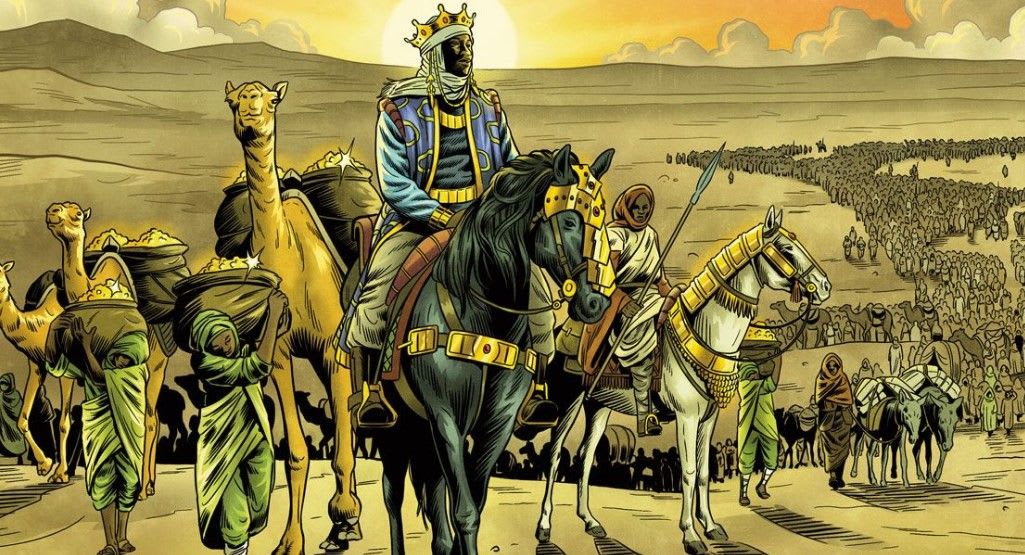The ruler of one of the wealthiest kingdoms in ancient Africa, Mansa Musa, led skillfully. Rooted in his faith, the devout Muslim took the already wealthy kingdom of Mali and expanded its riches both monetarily and culturally. His name is counted today as having been one of the richest men in history. His story is a short yet impactful one.
Mansa I of Musa ruled the kingdom of Mali from 1312 C.E to 1337 C.E. His brother, Mansa Abu Bakr II, left him the kingdom when he left on an expedition to the Atlantic Ocean and disappeared at sea. Although his riches have not been precisely quantified, Musa is considered one of the wealthiest people in the world during his time, and he never shied away from displaying his wealth for all to see. However, unlike most rulers, Musa prioritized the development of his kingdom and turned Mali into a hub of cultural and educational significance.
As mentioned, Musa was a devout Muslim. He decided to embark on the Hajj to Makka (Pilgrimage to Mecca), one of the Five Pillars of Islam all Muslims are expected to make given their ability to afford it. In 1324 the Malian king set off with a total of 60 000 people on what would be one of his most well-known journeys. The journey was not easy; however, the king and his servants rode in style decked out in the finest Persian silk and carried vast amounts of gold.
When Musa entered Egypt, he made a stop in Cairo and caused quite the commotion and left a lasting impression. In Egypt, he met with the sultan and gave so much gold away to members of parliament, the poor he met along the way, and scholars that this harmed Egypt’s economy. Unintentionally, Musa caused the price of gold to drop drastically, and this lasted for over a decade. It is said that Musa’s lavish display of his wealth was to cause a ripple, which worked as his name garnered attention in Europe where the Catalan Atlas included him and Mali in 1375.
Upon his return to Mali, Musa embarked on revitalizing his kingdom. He had the vision to bring together Muslims from other regions to Mali and utilize their talents to grow the religion of Islam. He brought in the best professionals from various fields such as architects, artists, and teachers from Egypt, Syria, and Iraq. This impact on Mali is still visible today as the architecture created then displayed a distinctly West African style. Musa erected many mosques and madrasas in cities like Timbuktu and Gao, which became a part of his empire when he returned from his hajj.
Mali became a significant source of knowledge during Musa’s reign, with Timbuktu becoming a center of trade as markets attracted merchants from Egypt and other kingdoms, cultures, and education. In addition, the University of Sankore in Timbuktu attracted scholars from the Middle East and around Africa because of its rich educational tradition and libraries filled with books on a multitude of topics.
Under Mansa Musa’s reign, Mali became a bustling kingdom and an important location for Islamic education. Musa’s leadership expanded the empire and developed it into an epicenter of activity and wealth. The kingdom’s impact reached far and wide and even today is an example of African success. Mansa Musa is remembered for promoting education, Islam, and Malian culture.
Leave a Comment
Sign in or become a Africa Rebirth. Unearthing Africa’s Past. Empowering Its Future member to join the conversation.
Just enter your email below to get a log in link.



Related News
The Rise and Fall of the Ancient Oyo Empire
Nov 26, 2023
How Ancient Egyptian Knowledge Influenced the Invention of Electricity
Aug 29, 2022
The Inhumane Treatment of African Slaves Before Departure to the Land of No Return
Apr 30, 2022